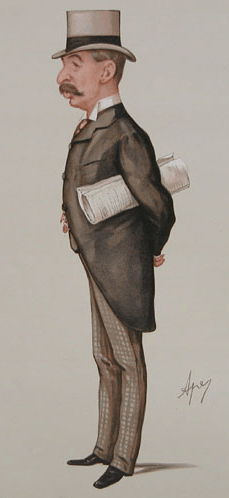Charles Ritchie, 1st Baron Ritchie of Dundee facts for kids
Quick facts for kids
The Lord Ritchie of Dundee
PC
|
|
|---|---|
 |
|
| President of the Board of Trade | |
| In office 29 June 1895 – 7 November 1900 |
|
| Monarch | Victoria |
| Prime Minister | The Marquess of Salisbury |
| Preceded by | James Bryce |
| Succeeded by | Gerald Balfour |
| Home Secretary | |
| In office 12 November 1900 – 12 July 1902 |
|
| Monarch | |
| Prime Minister | The Marquess of Salisbury |
| Preceded by | Sir Matthew White Ridley, Bt |
| Succeeded by | Aretas Akers-Douglas |
| Chancellor of the Exchequer | |
| In office 11 August 1902 – 9 October 1903 |
|
| Monarch | Edward VII |
| Prime Minister | Arthur Balfour |
| Preceded by | Sir Michael Hicks Beach, Bt |
| Succeeded by | Austen Chamberlain |
| Personal details | |
| Born | 19 November 1838 Dundee, Scotland |
| Died | 9 January 1906 (aged 67) Biarritz, France |
| Resting place | Kensal Green Cemetery, London, England |
| Nationality | British |
| Political party | Conservative |
Charles Thomson Ritchie, 1st Baron Ritchie of Dundee (born November 19, 1838 – died January 9, 1906) was an important British politician. He was a member of the Conservative Party. He served in the House of Commons, which is like the main law-making body in the UK. Later, he became a Baron, a special title in the British system.
Ritchie held several big jobs in the government. He was the Home Secretary from 1900 to 1902. This role is in charge of internal affairs, like policing and justice. He also served as the Chancellor of the Exchequer from 1902 to 1903. This person is responsible for the country's money and finances.
Early Life and Education
Charles Thomson Ritchie was born in Dundee, Scotland. He was the third son of William Ritchie. His family ran a business that dealt with trade between Britain and India.
He went to the City of London School. After finishing school, he joined his family's business. His older brother, James Thomson Ritchie, also became famous. He was the Lord Mayor of London from 1903 to 1904.
In 1858, Charles Ritchie married Margaret Ower.
Political Career Highlights
Charles Ritchie started his political career in 1874. He was elected to Parliament as a Conservative member for an area called Tower Hamlets.
In 1885, he became the Secretary to the Admiralty. This meant he helped manage the Royal Navy. From 1886 to 1892, he was the President of the Local Government Board. This job involved overseeing local councils across the country.
- Local Government Act 1888*
Ritchie played a key role in creating the Local Government Act 1888. This law set up county councils across England and Wales. These councils helped manage local services. A big part of this was creating the London County Council. This was a new way to govern London.
- Serving in Top Government Roles*
Later, Ritchie served as the President of the Board of Trade from 1895 to 1900. This role is in charge of trade and business matters for the country. After that, he became the Home Secretary from 1900 to 1902.
In 1902, he took on the very important job of Chancellor of the Exchequer. This meant he was responsible for the UK's budget and economy. During this time, he had a disagreement with another politician, Joseph Chamberlain. They disagreed about trade rules, especially about taxes on goods from other countries. This disagreement led to Ritchie leaving his role in 1903.
Ritchie's son-in-law, an architect named Mervyn McCartney, built a country house for him. It was called Welders House in Jordans.
Later Life and Legacy
On December 22, 1905, Charles Ritchie was given the title of Baron Ritchie of Dundee. This made him a member of the House of Lords.
Sadly, he was not in good health. He passed away in January 1906 in Biarritz, France. He is buried in Kensal Green Cemetery in London. His son, Charles, inherited his title.
In late 1902, Ritchie was also chosen as the Rector of the University of Aberdeen in Scotland. He held this position for three years.
Images for kids



